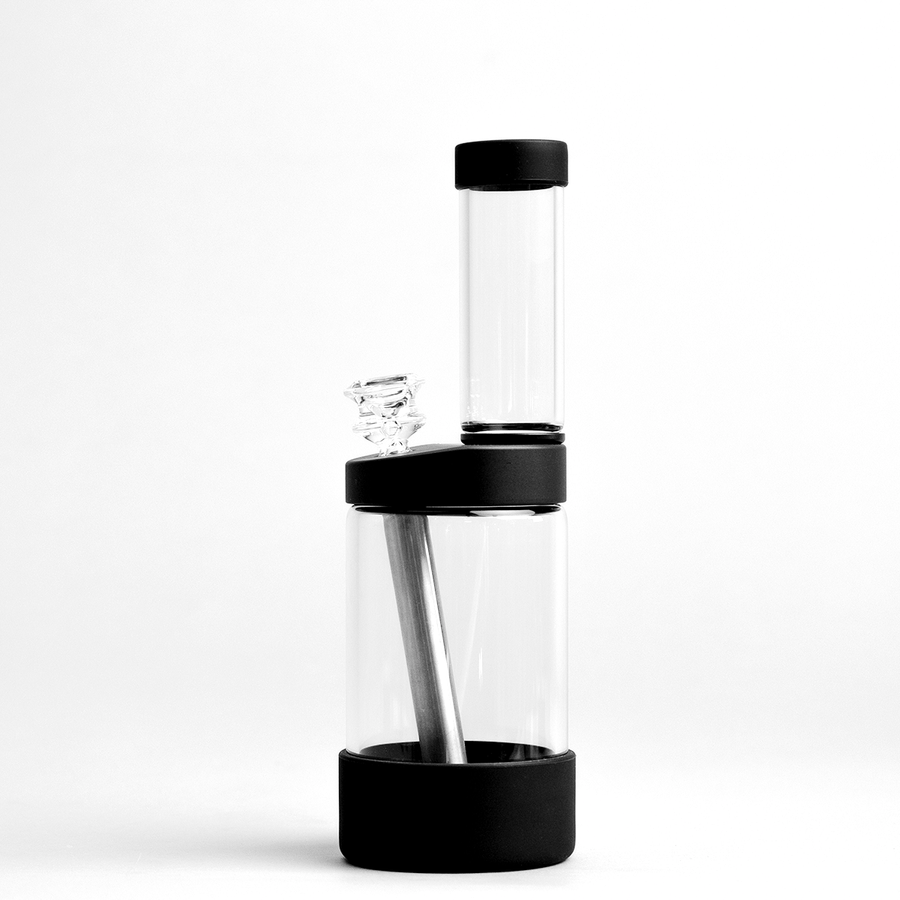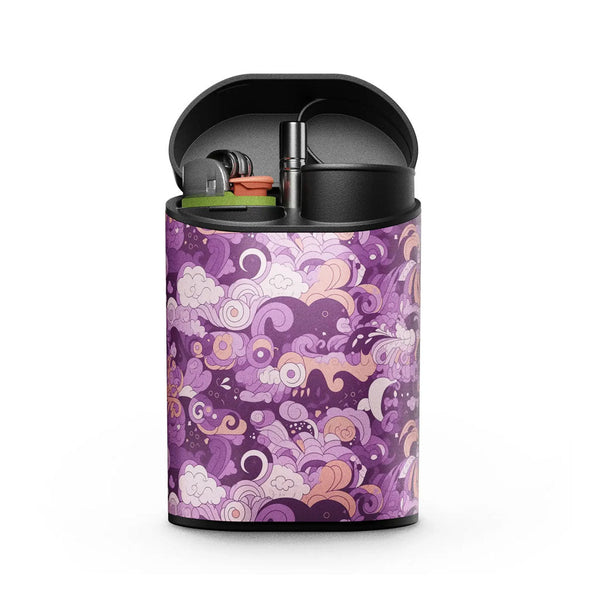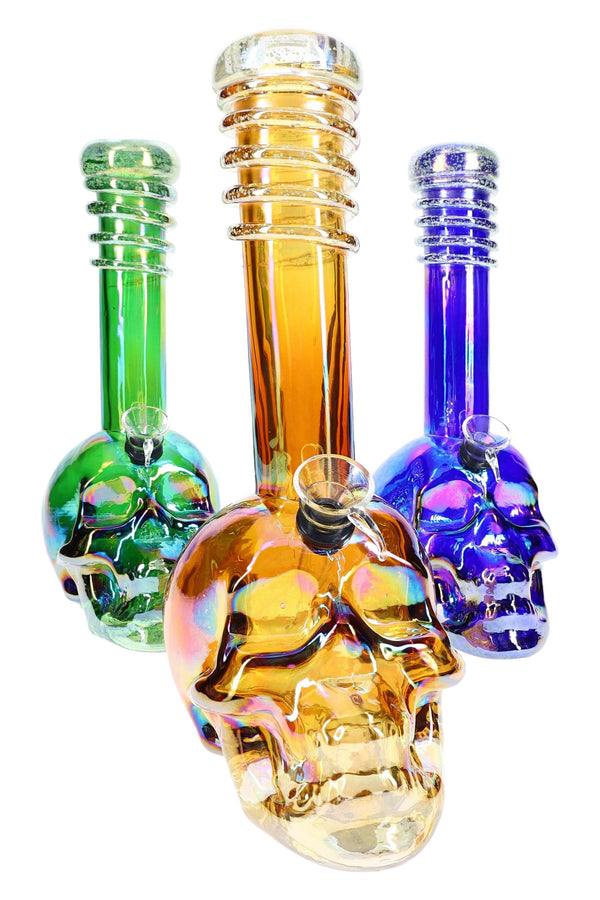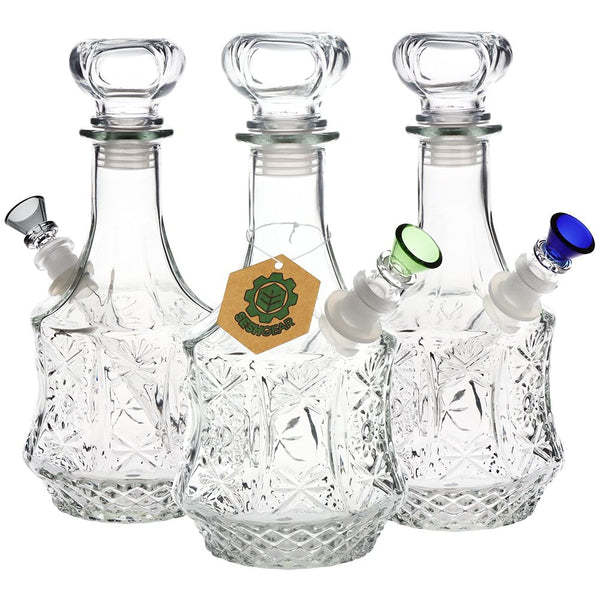What Does Mad Honey Do to Your Body? Exploring Its Uses and Effects

Ever wondered what does mad honey do to your body? This rare type of honey attracts thrill-seekers and traditional medicine users alike. Known for its unusual effects, it raises curiosity among those searching for natural remedies or unique experiences.
But consuming it can be tricky and even dangerous if not handled with care.
Mad honey comes from the nectar of rhododendron flowers, containing a toxin called grayanotoxin. This makes it both fascinating and risky. In this blog, readers will learn about its production, effects, safety tips, and more.
Stay curious—this topic is as sweet as it is strange!
What Is Mad Honey?
Mad honey is a type of toxic honey made from the nectar of Rhododendron flowers. This unique honey owes its effects to grayanotoxins, natural compounds that can cause narcotic and psychoactive reactions in humans.
Its reddish color sets it apart from regular honey, giving it an exotic look.
Grayanotoxins in mad honey bind to sodium channels in the body. This leads to symptoms like dizziness, nausea, hypotension, and even seizures if consumed excessively. South Korea banned it in 2005 after a fatal case linked to overconsumption.
Most jars warn against eating more than two large spoons daily.
One spoon too many could turn this sweet substance into a risky experience.
Continue reading about how bees produce this rare delicacy in specific regions worldwide.
How Mad Honey Is Produced
Bees create mad honey by collecting nectar from rhododendron flowers. The process infuses the honey with grayanotoxins, making it unique and potentially dangerous.
Regions Known for Mad Honey Production
Mad honey comes from specific regions where rhododendrons grow in abundance. These areas are known for their unique conditions that support the production of toxic honey with grayanotoxins.
- Nepal produces large amounts of mad honey, especially in high-altitude Himalayan regions. Locals collect it as both a traditional remedy and a recreational substance.
- Turkey is another key producer, particularly in the Black Sea region. Rhododendron luteum and Rhododendron ponticum thrive here, making it a hotspot for this narcotic honey.
- Small quantities of mad honey also occur in the Appalachian Mountains in the eastern United States. Rare weather conditions create an environment where toxic honey can develop here.
- Honey from alpine areas typically contains higher levels of grayanotoxins due to colder climates and specific plants present there.
- Vaughn Bryant, a professor at Texas A&M, notes that U.S.-produced mad honey is rare but happens occasionally under precise environmental factors.
- Farmers in these regions use traditional beekeeping methods to harvest this highly sought-after honey while respecting its natural medicinal properties.
- The rarity and unique qualities of Appalachian or Turkish mad honey make them valuable on niche markets among cannabis users seeking natural alternatives or experiences like mild intoxication effects.
Bees and the Role of Grayanotoxins
The Himalayan giant honey bee (Apis laboriosa) makes mad honey in the Hindu Kush Himalayan region. These bees collect nectar from rhododendron flowers, which contain grayanotoxins, a natural toxin.
Grayanotoxins give the honey its unique psychoactive and medicinal properties but can also cause harmful effects if consumed in large quantities.
These bees nest on steep cliffs at heights between 3,900 and 13,100 feet. Harvesters gather this rare honey twice yearly—in late spring and late fall—while facing dangerous conditions.
Due to habitat loss and overharvesting, Apis laboriosa populations have decreased by 70% annually on these cliffs. Sustainable methods like leaving half of the combs ensure future production and protect these vital pollinators.
Sustainable harvesting is critical to preserving both the bee population and their valuable mad honey.
Effects of Mad Honey on the Body
Mad honey interacts with the nervous system due to its unique compounds. Its effects range from mild intoxication to severe physical reactions, depending on the amount consumed.
Hallucinogenic Properties
The psychoactive properties of mad honey come from grayanotoxins. These toxins affect the nervous system, causing altered perception and intoxicating effects. Users often report hallucinations, euphoria, or dizziness after consuming small amounts.
High doses can lead to severe neurological effects like confusion or loss of consciousness.
Severe poisoning triggers muscle paralysis and poses life-threatening risks. Historical records highlight its use in warfare to incapacitate enemies through disorientation and hallucination.
Despite these dangers, some recreational users seek this hallucinogenic effect for unique experiences.
Potential Medicinal Benefits
Mad honey, beyond its hallucinogenic effects, holds notable medicinal properties. People in the Turkish Black Sea region use it to treat indigestion, gastritis, peptic ulcers, and the flu.
Traditional medicine practitioners also consider it beneficial for sore throats, arthritis, diabetes, hypertension, and sexual health issues.
A 2015 study highlighted grayanotoxin-III’s antioxidant properties. These antioxidants may support natural treatments by fighting harmful free radicals in the body. Some herbal remedies credit mad honey for boosting overall wellness while addressing specific ailments like inflammation or chronic pain.
Toxic Side Effects
Grayanotoxins in this honey can bind to sodium channels, causing severe reactions. Common symptoms include nausea, dizziness, hypotension, and bradycardia. In extreme cases, poisoning leads to seizures, muscle paralysis, hallucinations from poisoning, or even unconsciousness.
Recovery time depends on the symptoms' severity. Mild effects usually clear up within 12 hours. Severe cases may last for 24 hours and require medical treatments such as saline infusions or atropine injections.
A systematic review of 1,199 intoxication cases from 2015 confirmed no reported deaths but highlighted serious health risks if consumed recklessly.
Traditional Uses of Mad Honey
Mad honey has long served as a unique substance in cultural rituals and natural therapies, offering intriguing effects that continue to draw attention.
Medicinal Applications
People have used mad honey in traditional medicine for centuries. In the Turkish Black Sea region, locals rely on it to ease indigestion, gastritis, peptic ulcers, and even flu symptoms.
Its natural healing properties make it a popular choice in folk medicine.
Studies show that grayanotoxin-III in mad honey may act as an antioxidant. Some use it to manage arthritis pain, diabetes, hypertension, and sore throats. Others value its potential benefits for sexual health or treating minor infections as part of herbal remedies.
Recreational Use
While medicinal applications highlight its healing potential, mad honey's recreational use focuses on its psychoactive effects. Known as hallucinogenic honey, it attracts thrill-seekers looking for a natural high.
Small quantities can induce euphoria, light-headedness, and altered perceptions. These sensations occur due to grayanotoxins found in nectar collected by bees in Nepal and Turkey.
Some users describe heightened sensory experiences and mild hallucinations after consuming this toxic honey. Its longstanding role as a recreational drug has made it culturally significant in these regions.
Despite its allure, overconsumption leads to serious health risks like dizziness or even hospitalization from poisoning symptoms.
Risks and Safety Concerns
Consuming mad honey can cause severe reactions, urging users to approach it with caution and learn more about its risks.
Symptoms of Mad Honey Poisoning
Mad honey can cause serious effects due to the presence of grayanotoxins. These toxins bind to sodium channels in the body, disrupting normal nerve and muscle functions.
- Nausea often occurs shortly after consuming too much mad honey. This can lead to vomiting in severe cases.
- Dizziness is a common symptom and may leave individuals feeling lightheaded or unsteady.
- Blurred vision often accompanies other symptoms and affects clarity of sight temporarily.
- Hallucinations are a key effect, giving the honey its reputation as a natural hallucinogen.
- Hypotension, or low blood pressure, can result from toxin exposure, causing weakness or fainting.
- Bradycardia, which slows the heart rate, is another frequent reaction tied to grayanotoxins.
- Seizures can occur in extreme cases due to neurological disruption from the toxins.
- Muscle paralysis is a dangerous symptom that can impair movement or breathing if not treated promptly.
- Loss of consciousness happens when severe poisoning overwhelms the body’s systems.
- Heart-related symptoms include irregular rhythm or chest discomfort caused by sodium channel interference.
Symptoms may vary but should never be ignored as untreated cases could become fatal without medical help.
Safe Dosage Guidelines
Warning labels on mad honey jars recommend no more than two large spoons per day. Consuming higher amounts increases the risk of poisoning symptoms, including nausea, dizziness, and low blood pressure.
Recovery from mild poisoning usually happens within 12 hours. Severe cases may take up to a full day. Treatments like atropine, adrenaline, or saline infusions help manage adverse reactions in serious situations.
Safety precautions are essential to avoid dangerous overconsumption risks.
Legal Status and Availability
Mad honey's legal status varies across countries, making its availability limited in many regions.
Countries Where Mad Honey Is Legal
Mad honey is a unique product with legal restrictions in several countries. Its legality often depends on regional laws and its classification as a potentially toxic substance.
- Turkey allows the sale of mad honey, especially in regions like the Black Sea, where it is part of local traditions. It remains a significant producer and exporter.
- Nepal produces and sells mad honey, where locals harvest it from wild hives on cliffs. Tourists often seek it for its exotic properties.
- South Korea banned mad honey in 2005 due to a death linked to overconsumption, making its sale illegal there.
- Japan recognizes mad honey as present but enforces strict controls because of health risks associated with grayanotoxin consumption.
- Brazilian regions with suitable conditions also produce this toxic honey but impose limits on trade due to poisoning concerns.
- Portugal and Spain report occurrences of mad honey, though it remains regulated under European Union food safety laws to prevent misuse or harm.
- The United States restricts the import and sale of this product after FDA records linked cases of foodborne illnesses to its consumption.
Challenges in Purchasing Mad Honey
Finding mad honey can be tricky due to its limited production regions. Rural areas in Nepal and Turkey use traditional methods, ensuring purity but making it harder to access globally.
Rare occurrences of grayanotoxin honey in the U.S., as noted by Vaughn Bryant, depend on specific weather conditions, reducing availability.
Its high price tag of about $166 per pound also limits widespread purchase. Legal restrictions in some countries further complicate buying options for consumers. Considering these challenges highlights why understanding safe dosage is essential before exploring this rare substance’s effects.
Historical Accounts of Mad Honey Usage
Ancient armies reportedly used mad honey to weaken their enemies during battles, creating chaos through intoxication.
Military Incidents Involving Mad Honey
King Mithridates used mad honey as a biological weapon during the Third Mithridatic War in 65 BCE. His army left toxic honeycombs for their enemy to consume. The opposing soldiers fell sick and became too weak to fight, leading to an easy victory.
In 67 BCE, Roman troops suffered severe illness after eating mad honey near modern-day Turkey. Xenophon’s army also encountered this issue in 401 BCE while retreating through Persia, leaving them incapacitated temporarily.
In 946, fermented poisonous honey killed 5,000 enemies when sent as a gift. Similarly, in 1489, Tatars drinking poisoned mead lost nearly 10,000 men to Russian forces due to its effects.
Folklore and Cultural Significance
The Gurung people of Nepal practice honey hunting, a tradition tied to their cultural heritage. This ritual involves collecting mad honey from cliffs where bees feed on poisonous plants like rhododendrons.
Despite its toxicity, the practice holds spiritual importance and reflects indigenous traditions.
Historical accounts show that mad honey's significance dates back over 2,000 years. Ancient figures like Xenophon in 401 BCE documented its effects on soldiers during military campaigns.
Aristotle also referenced its psychoactive properties while studying nature. These stories highlight its historical importance across cultures and time periods.
Conclusion
Mad honey offers a mix of intrigue and caution. Its effects range from hallucinogenic experiences to potential medicinal benefits, but it also carries serious risks. Understanding its production, history, and safe use is essential before trying it.
This unusual honey continues to captivate both tradition and science, bridging ancient practices with modern curiosity.
FAQs
1. What is mad honey, and how does it affect the body?
Mad honey is a type of honey made from nectar containing grayanotoxins. These toxins can cause dizziness, nausea, sweating, or even hallucinations when consumed in large amounts.
2. Can mad honey be used for health benefits?
Yes, some people use small doses of mad honey to lower blood pressure or reduce pain. However, improper use can lead to harmful effects.
3. Is consuming mad honey dangerous?
In high doses, mad honey can cause serious symptoms like irregular heartbeat or fainting. It’s important to consume it carefully and in moderation.
4. Why do people seek out mad honey despite its risks?
Many believe it has medicinal uses such as improving energy levels or treating certain conditions naturally while also exploring its unique effects on the body.






![Vessel Helix Pipe [Copper] - Headshop.com](http://www.headshop.com/cdn/shop/files/ad3c0443-b76d-4fe5-84b8-a617dd50a950.jpg?v=1747419387&width=900)
![Vessel Helix Pipe [Copper] - Headshop.com](http://www.headshop.com/cdn/shop/files/7b0e06e3-9106-4684-80e4-408362c34085.jpg?v=1747419388&width=1000)
![Vessel Wood Vape Pen Battery [White/Beechwood] + - Headshop.com](http://www.headshop.com/cdn/shop/files/4ecd5d0f-363a-454e-a7a0-229fb93bf456.jpg?v=1725470645&width=900)
![Vessel Wood Vape Pen Battery [White/Beechwood] + - Headshop.com](http://www.headshop.com/cdn/shop/files/d232e493-09e6-4574-b44c-3e2bde9425b4.jpg?v=1725470647&width=1000)


![Vessel Compass Apex Charger [Black] - Headshop.com](http://www.headshop.com/cdn/shop/files/f10e6bf4-6ce7-4a59-a50e-a4184f069754.jpg?v=1729115238&width=900)
![Vessel Compass Apex Charger [Black] - Headshop.com](http://www.headshop.com/cdn/shop/files/dce98c70-346c-405f-aca8-d59c7feed96d.jpg?v=1729115240&width=1000)


![Vessel - Mill [Beechwood] Vessel - Mill [Beechwood]](http://www.headshop.com/cdn/shop/files/MILL_GUNMETAL_BEECH_COLLAPSED_FRONT_800.jpg?v=1744308513&width=600)
![Vessel - Cone [Onyx] Vessel - Cone [Onyx]](http://www.headshop.com/cdn/shop/products/6f51074a-2173-4ab4-876d-22a84764eb5d.png?v=1679517316&width=600)
![Vessel - Air [Jade] Vessel - Air [Jade]](http://www.headshop.com/cdn/shop/products/7cd436a1-b1f0-4e01-9e52-050ad7140b56.png?v=1679506090&width=600)
![Pipe by Vessel [Rose Gold] Pipe by Vessel [Rose Gold]](http://www.headshop.com/cdn/shop/files/Pipe_Rose_Gold_Closed.jpg?v=1744306576&width=600)
![Vessel Helix Pipe [Black] - Headshop.com](http://www.headshop.com/cdn/shop/files/Pipe_Black_Angle.jpg?v=1744306153&width=900)
![Vessel Helix Pipe [Black] - Headshop.com](http://www.headshop.com/cdn/shop/files/Pipe_Black_Closed.jpg?v=1744306155&width=1000)
![Vessel Compass Rise Vape Bar [Crimson] - Headshop.com](http://www.headshop.com/cdn/shop/files/fc3fd52a-2783-4fac-bd38-bc4f2013a889_5466b32d-da71-427f-8737-bf7d7f5f2c77.jpg?v=1735253136&width=900)
![Vessel Compass Rise Vape Bar [Crimson] - Headshop.com](http://www.headshop.com/cdn/shop/files/66947a99-195c-4deb-b29e-03443ebebd5a_32c35e3d-ba1b-4d4d-a879-3886d37bddf7.jpg?v=1735253136&width=1000)


![Vessel - Ember [Gold] Astray - Headshop.com](http://www.headshop.com/cdn/shop/files/20220106_EMBER_BRASS.jpg?v=1744309601&width=900)
![Vessel - Ember [Gold] Astray - Headshop.com](http://www.headshop.com/cdn/shop/files/20220106_EMBER_BRASS_WITH_AIR.jpg?v=1744309601&width=1000)








![Pipe by Vessel [Gunmetal]](https://cdn.shopify.com/s/files/1/0585/8462/9443/files/Pipe_Gunmetal_Angle_500x500.jpg?v=1744306453)













